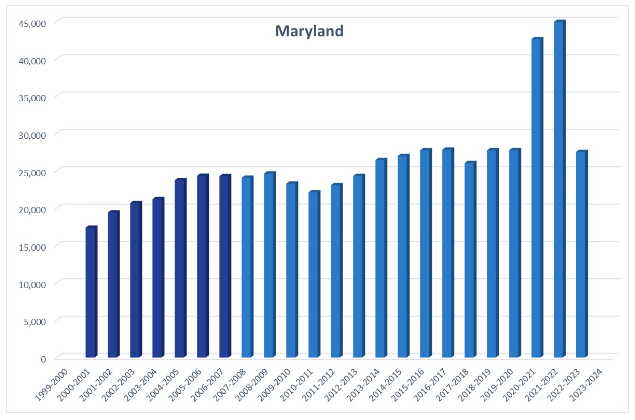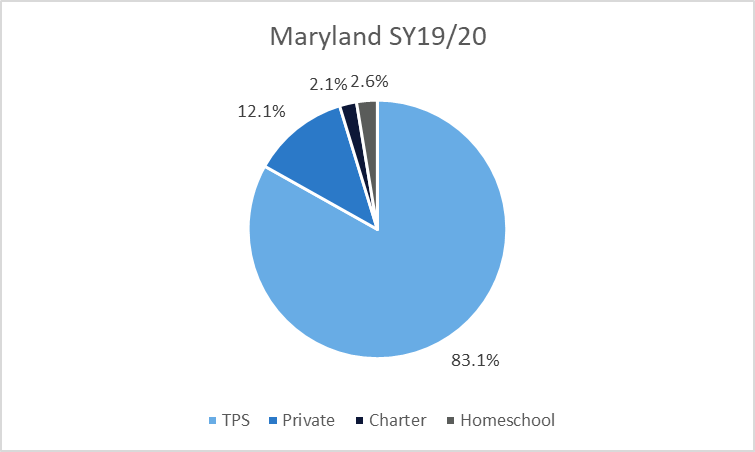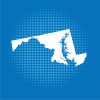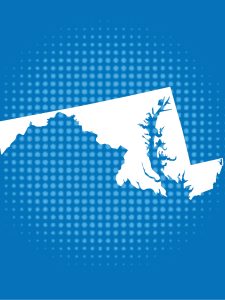In Maryland, traditional homeschool families must maintain a portfolio of materials to be reviewed by the local superintendent.
History
Located in the southern United States, Maryland legalized homeschooling in 1987 with MD COMAR 13A.10.01. This law was amended in 2019.
Regulation
In Maryland, parents who homeschool their children, from ages 5 to 18, must notify their local district by completing an online form. There are several options for how to classify the homeschool, including through another school or church organization. Parents must maintain a portfolio of materials which are reviewed by the local superintendent at the end of every semester to ensure that the student is receiving regular and thorough instruction. There are no attendance requirements, but the state recommends that instruction occur “on a regular basis.” Instruction in subjects “usually taught” in public schools is required. There are no minimum education requirements for the parent, who remains “ultimately responsible” for home instruction, but others may provide instruction either inside or outside the home. This instructor flexibility opens the door to participation in microschools and other emerging models that blend more traditional homeschooling with alternative modes of education. Parents must keep records and a portfolio of student work. Homeschooled students may take the state assessment, but there is no requirement to take that or any other test.
Maryland provides no access to public school educational offerings such as courses, sports, and extracurriculars for nonpublic students, including homeschooled students. This restricted access includes access to special education services.
State Data
Maryland provides publicly available information on homeschool participation by county and by district. In 2000, districts across the state reported 17,000 homeschooled students. By 2015, that number had increased to 27,000. In 2022, reported homeschool enrollment reached almost 45,000 students.

The 2020 U.S. Census estimates tell a similar story. 4.4% of Maryland families reported homeschooling in the spring of 2020, and 6.1% by the fall. This is close to half of the national average at the time, at 11.1%. Based on U.S. Census data, our calculations indicate that about 5.99% of K-12 students in Maryland were homeschooled during the 2022-23 school year, and 4.65% during the 2023-24 school year. Due to survey changes, the data from 2020 reflects the percentage of households, while the data from following years reflects the percentage of students.
Cross-Sector Comparison
During the 2019-20 academic year, 2.6% of Maryland’s K-12 students were homeschooled. Similarly, only 2.1% of Maryland students attended a charter school. Homeschool and charter participation in the state was much lower than 12.1% of private school students. In 2021-22, 4.3% of Maryland’s K-12 students were homeschooled. Charter and private school participation held steady at 2.3% and 11.9%, respectively.


School Choice Context
Maryland does not offer open enrollment (inter- and intra-district choice) in its public school system, and families cannot send their children to schools outside their district without approval. Maryland has few charter schools, limiting charter school enrollment in the state, and some magnet schools. The state also has a small—both in participation and value—private school choice program that serves about 3,000 students and provides a $3,000 credit per student annually. However, homeschooled students are not eligible.
Commentary
Maryland could improve our understanding of homeschool participation in the state by reporting more detailed information about their homeschool population using information they already collected. For example, data on the age or grade of homeschoolers in the state could help us better understand growth in the sector. The state could improve educational access for all students by allowing nonpublic students the same educational offerings provided to students in the local public schools. National trends are moving in this direction, and Maryland is one of a handful of states that does not provide access to these offerings.

-
6.1% Families
Around 6.1% of families in Maryland homeschooled during the height of the pandemic (Fall 2020).
-
1987 Legalized
Homeschooling was legalized in 1987 in the state of Maryland.
-

-
More Information
6.1% Families
Around 6.1% of families in Maryland homeschooled during the height of the pandemic (Fall 2020).
1987 Legalized
Homeschooling was legalized in 1987 in the state of Maryland.

More Information
Last updated March 2025.